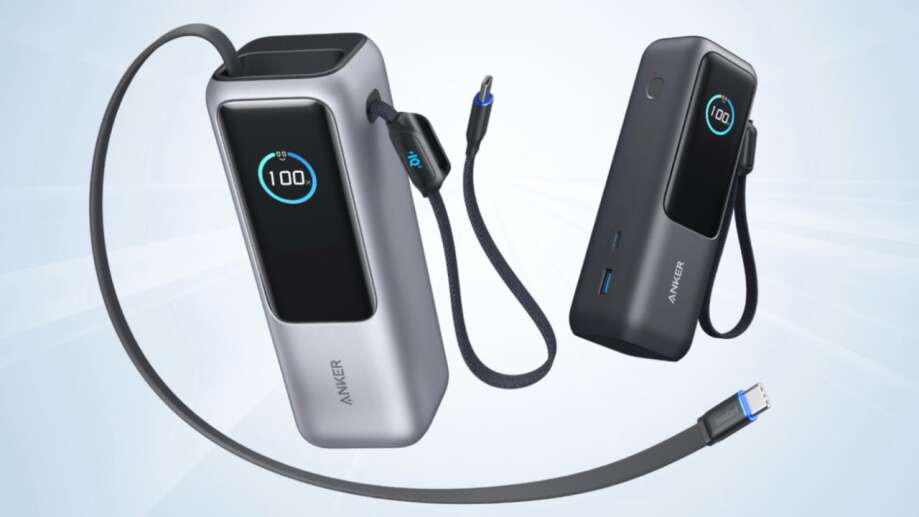Top 10 Power Banks 2025 – Rapid Charge Champions

When your phone battery is about to die and you’re nowhere near a plug, a reliable power banks solution becomes your lifeline. In 2025 the market is brimming with options that promise to charge your device in minutes, not just hours. Whether you’re commuting, travelling, or simply need backup power, choosing the right power bank can make all the difference. In this article we’ll walk through what to look for in 2025, highlight the top 10 power banks, and give you actionable guidance on choosing the right one for your lifestyle and device setup. Plus, you can explore our full product gallery and comparison on our site: TrendingOut – Charging Solutions & Mobile Tech.
Table of Contents
What matters in a power bank in 2025
Charging speed and output
In recent reviews of power banks, experts emphasise not just capacity (mAh) but how fast they can deliver that power. According to testing by authority sources, many modern models now support high-wattage output—some even up to 140 W—enabling rapid charging of phones and even laptops. Live Science+3Tom’s Guide+3Tech Advisor+3
When the claim is “charge your phone in minutes”, you’ll typically see power banks with strong USB-C Power Delivery (PD) or PPS (Programmable Power Supply) output.
Capacity, portability & real-world charges
Capacity (mAh) still matters—but it’s the usable capacity after loss and efficiency that counts. Cheap models might only deliver ~60–70% of their stated capacity in real use. Tech Advisor+1 Also, portability is key: a 20,000 mAh power bank that fits in a jacket pocket is more useful day-to-day than a heavy 40,000 mAh unit that lives in a backpack.
Number and type of ports
A modern power bank should ideally have:
- One or more USB-C output ports (for fast charging modern phones)
- Possibly a USB-A or other legacy port for older devices
- High input rate so the bank itself recharges quickly
Also check if any built-in cable is included or if wireless charging is supported (though wired is still faster overall).
Safety & brand reliability
Lithium-battery packs carry risk if poorly made. Reputable brands and models that have passed safety testing are far preferable. For example, there have been recall warnings about some models of power banks due to fire/over-heating issues. News.com.au+1 Always check certification, brand reputation, and user reviews.
Ecosystem compatibility & features
If you use an iPhone or Android, you may benefit from complementary features (e.g., MagSafe wireless, USB-C fast charge, built-in cables). Also consider whether you’ll charge other devices (tablet, laptop), whether you need pass-through charging, and what kind of case or bag you carry.
Top 10 Power Banks of 2025: Rapid-Charge Picks
Here are ten standout power banks for 2025, selected for their charging speed, capacity, portability and overall value. (Please check current availability and pricing in your region.)
- Anker Prime Power Bank (26,250 mAh / 300 W output) – One of the fastest in the market in 2025. Features dual 140 W USB-C ports, 22.5 W USB-A, and ultra-fast recharge (80% in ~35 minutes) per launch review. The Verge
- Ugreen 48,000 mAh 300 W Portable Power Bank – Huge capacity for multi-device charging (phone + laptop), high output (140 W/140 W) making it more of a “mobile power station” but still portable. Tech Advisor+1
- **Anker MagGo Power Bank (10K) – Slim form, magnetic alignment (for compatible phones) and strong wired & wireless output. Recognised in testing as among the fastest magnetic power banks. TechRadar
- INIU Pocket Rocket 10,000 mAh 45 W – For everyday carry: reasonable capacity, strong output (45W) and compact size. Ideal for powering phones fast. TechRadar
- Belkin BoostCharge Pro 20,000 mAh / Multi-Port – Trusted brand, tested by reviewers as best overall in “best power banks” lists. The Guardian
- Shargeek 24,000 mAh / 140 W – High capacity and output, good for users who want to charge their phone and other devices. Tom’s Guide
- Mophie Powerstation Mini 5K – Best compact backup – Lower capacity, but ultra-portable and good for quick top-ups. Tech Advisor
- ESR Qi2 5K MagSlim Kickstand Power Bank – Smaller capacity (5,000 mAh) but supports wireless charging (15 W) and includes a kickstand – useful for travel or casual use. Tech Advisor
- Ugreen Nexode 12,000 mAh / 100 W – Balanced middle ground: decent capacity, high output, portable. Tom’s Guide
- Nitecore NB 1000 Gen 3 – Lightweight and efficient – Reviewed as a high-value pack for travel/backpacking with good performance for its size. CleverHiker
Each of these power banks offers strong performance—but the right one depends on your device usage, travel habits, and what you need in terms of fast charging, portability and capacity.
How to choose the right power bank for your phone
Start with your primary device and charging habits
- What phone do you carry? If it supports fast charging (USB-C PD, PPS) then choose a bank with compatible output.
- Do you need wireless charging support? Some banks now include a wireless pad (like Qi2) for compatible phones.
- How many devices will you charge? Phone only vs phone + earbuds + tablet vs phone + laptop will affect capacity and output needs.
Match capacity to usage
If you’re mainly topping up your phone on the go, something in the 5,000 – 10,000 mAh range may be enough. If you travel frequently or charge multiple devices, consider 20,000 mAh+. Experts recommend keeping efficiency in mind (you won’t get 100% of stated capacity). Tech Advisor+1
Prioritise output speed
To “charge your phone in minutes”, look for high wattage output. Wired charging will always beat wireless in speed. For example, banks with 45W, 100W or 140W make a huge difference. If your phone only charges at 18–20 W max, a bank capable of higher output still helps for other devices.
Consider portability & form-factor
If you carry the bank in a pocket or handbag, lighter size and compact form matter. For e.g., the INIU, Mophie or ESR models offer very portable options. If it lives in a backpack or car, higher capacity heavier units may be fine.
Features & ecosystem
- Built-in cables vs separate.
- Wireless charging support (if relevant).
- Number of ports – if you’ll charge multiple devices simultaneously.
- Display or LED indicators for battery level.
- Safety certifications, brand reliability.
Budget & value
High-output and high-capacity power banks are more expensive—but the incremental cost may be worth it if you rely heavily on mobile devices. For basic backup needs, lower capacity and output may suffice.
Safety & compliance
Check for well-known brands, certifications (CE, UL etc), good reviews. Avoid overly cheap banks with poor ratings. Some models have been recalled for safety issues. News.com.au
Practical tips for everyday use
- Charge your power bank regularly so it’s ready when you need it.
- Use the USB-C port and cable that support your phone’s fast charge standard.
- Avoid charging multiple high-wattage devices from a small bank—it may slow charging.
- Store the bank in a cool dry place; avoid overheating (which shortens life).
- For flights/travel, check airline rules: some carriers restrict in-flight use of power banks. New York Post+1
- Consider your phone case: if it’s bulky, it may reduce alignment (for wireless) or speed (for wired) when paired with the bank.
Summary
In 2025, choosing the best power banks is about far more than just mAh. It’s about output speed, real-world portability, brand reliability and matching the bank to your devices and habits. Whether you’re looking for ultra-portable top-ups or a heavy-duty bank to charge phone, tablet and laptop, the ten models above offer excellent options across budgets and use-cases. Combine that with informed buying (refer back to the checklist above) and you’ll select a power bank that truly keeps you powered when you need it most.
If you’d like, you can also check our detailed comparison table with side-by-side specs, pros/cons and region-specific pricing on our site: TrendingOut – Charging Solutions & Mobile Tech
FAQs
Q1: How many full phone charges can I expect from a 10,000 mAh power bank?
Typically a modern phone with a ~4,000 mAh battery will get 1–2 full charges from a 10,000 mAh bank, depending on efficiency losses (often ~60-80% usable). Using fast-charge output will draw more current, so the count may reduce slightly.
Q2: Is a higher output wattage always better in a power bank?
Higher wattage output allows faster charging if your device supports it. If your phone can only accept 20 W, a 100 W output bank won’t make your phone charge faster beyond that limit—but it may help with other devices (tablet, laptop) and future‐proof you.
Q3: Can I use a power bank while it’s charging (pass-through charging)?
Some power banks support pass-through (charging the bank while it charges your device), but not all. Experts note that using pass-through may reduce lifespan or efficiency in some models. It’s best to check the bank’s specifications. Tech Advisor


